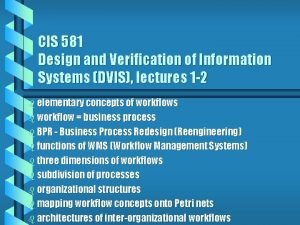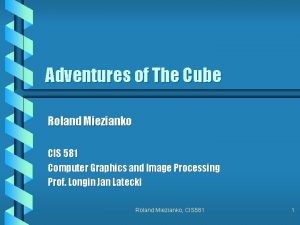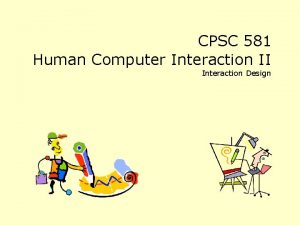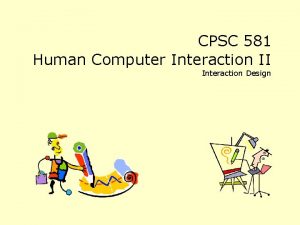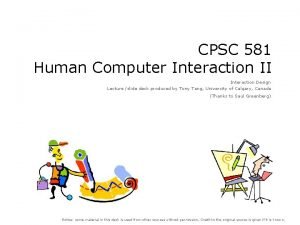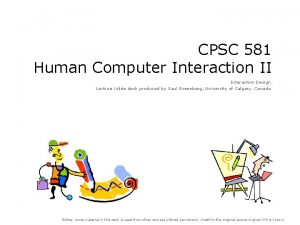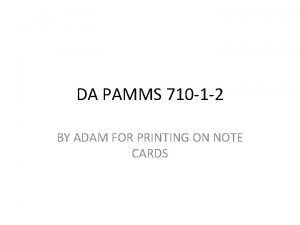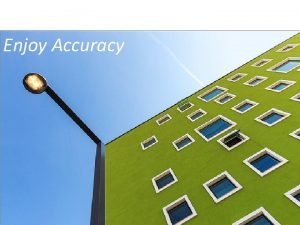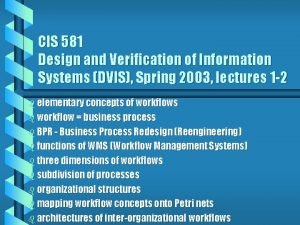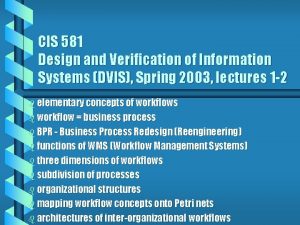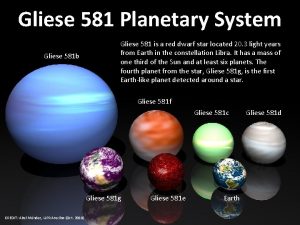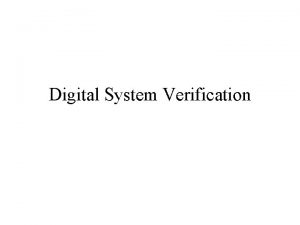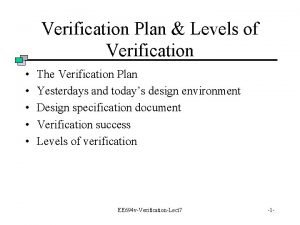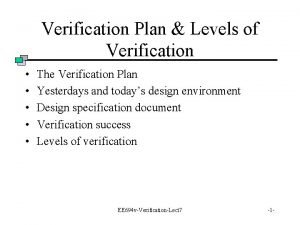CIS 581 Design and Verification of Information Systems










- Slides: 10

CIS 581 Design and Verification of Information Systems (DVIS) Spring 2003, lectures 3 -4 b Two problems with current WFMS b Five perspectives on WFMS b Reference nets - nets with reference semantics b Introduction to Renew b Enacting Inter-organizational Workflows Using Nets in Nets

Five Perspectives on WFMS b 1. The control flow (routing) perspective b 2. The resource (organization) perspective b 3. The data (information) perspective b 4. The task (function) perspective b 5. The operation (application) perspective

Five Perspectives on WFMS, ctnd. b WFMS should support the five perspectives b the build-time part of the WFMS allows for the specification of five perspectives b the run-time part of WFMS takes care of the actual enactment b the fact that the control flow perspective dominates all other perspectives restricts the reuse of parts of the workflow definition and limits the extensibility of the WFMS with additional perspectives

Five Perspectives on WFMS, ctnd. b b Since all perspectives are intertwined, it is impossible to exchange cases, resources, data, tasks, or operations between workflow enactment services in different organizations E-commerce - exchange information between business partners and suppliers and inside of companies Inter-OWS - workflows crossing boundaries between corporations in an E-commerce setting Intra-OWS - workflows involving multiple business units within one corporation

Five Perspectives on WFMS, ctnd. b Commercial WFMS use a centralized enactment service both the build-time and run-time problems with IOWS

Reference Nets - “nets in nets paradigm” b Definition of Reference Nets - Petri Nets where the tokens can be references to other Petri nets b Reference Nets are used for specifying and enacting IOWF; they model mobility of a business object like a workflow instance, a resource, a data element, a task, or an operation b object-nets - token of system net correspond to marked PNs on a lower level, called object-nets b since object-nets actually reside in the systemnet, we call this the value semantics approach

Reference Nets - “nets in nets paradigm” b Reference nets use a different approach - the object-nets do not actually reside in the system net, but tokens are references to object-nets; this means that multiple tokens can reference the same object-net - this is called reference semantics

Two Problems with Current WFMS b 1. Unclear mixture of perspectives in the current generation of WFMS making workflow specifications incomplete and difficult to interpret. b 2. Absence of tools to describe and enact the mobility of business objects required for IOWF.

Introduction to Reference Nets and Renew b Renew - The Reference Net Workshop b Renew - the only tool supporting execution of any kind of nets in nets, and it uses reference semantics b all five perspectives on WFMS are modeled in terms of reference nets b an instance of each perspective corresponds to one marked object-net b the system-net joins all perspectives and can be seen as the enactment service of WFMS

Introduction to Reference Nets and Renew, ctnd. b Since every aspect is modeled in a separate object-net, it is not necessary to intertwine all aspects b the system-net is generic, i. e. , independent of actual workflows and organization b one can think of the system-net as an architectural model and the object-nets as the actual content - the workflow designer only creates object-nets
